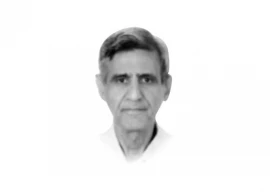
The adoption of solar energy in Sindh varies between urban and rural areas, according to the statistics recently released by the Federal Bureau of Statistics (FBS). The data shows that 6.936 million households consume electricity from conventional power distribution companies. Of these, 2.181 million are in rural areas and 4.755 million in urban centres.
Interestingly, solar energy is becoming particularly popular in rural areas. Around 1.240 million households in Sindh use solar panels for electricity, with a concentration of 1.039 million in rural regions compared to 200,365 in urban areas.
According to the breakdown, Hyderabad Division leads with 273,983 households consuming solar power, followed by Sukkur Division (281,549), Larkana Division (340,324), Shaheed Benazirabad Division (208,166), Mirpurkhas Division (86,084), and Karachi Division, which has the fewest solar users at 50,170 households.
This trend shows a pronounced preference for solar energy in rural communities compared to urban centres in the province, despite the overall lower number of solar users in Karachi Division. In total, 1.685households in the province rely on other sources for electricity.
This FBS data indicate the ongoing shift towards renewable energy sources in Sindh, particularly in its rural areas, as households increasingly turn to solar energy solutions for a variety of reasons, including the chronic electricity crisis in the country.
The solar energy is considered most viable for villages where power distribution system grid was not available.
In a recently held meeting Sindh Energy Minister Nasir Shah told Chief Minister Murad Ali Shah that there were 2.6 million off-grid households of them 500,000 may be provided Solar Home Systems (SHS) in the first phase. The CM said that a 100-watt SHS was enough for three LED bulbs, a 35W DC fan and a 6-hour battery backup with Mobile charging ports. Nasir Shah told the CM that the cost of an SHS comes to around Rs50,000 each and the total cost for 2.6 million SHS would be around 25 billion.
The CM said that six micro-grids, each one of 75kW, could be established in all six divisions as a pilot project to cover a 100-household cluster. These grids could provide electricity to households consuming 100 kWh. Minister Energy said that its feasibility could be prepared if the proposal is approved.















1737618478-0/Express-Tribune---News-Desk-(9)1737618478-0-270x192.webp)








COMMENTS (3)
Comments are moderated and generally will be posted if they are on-topic and not abusive.
For more information, please see our Comments FAQ